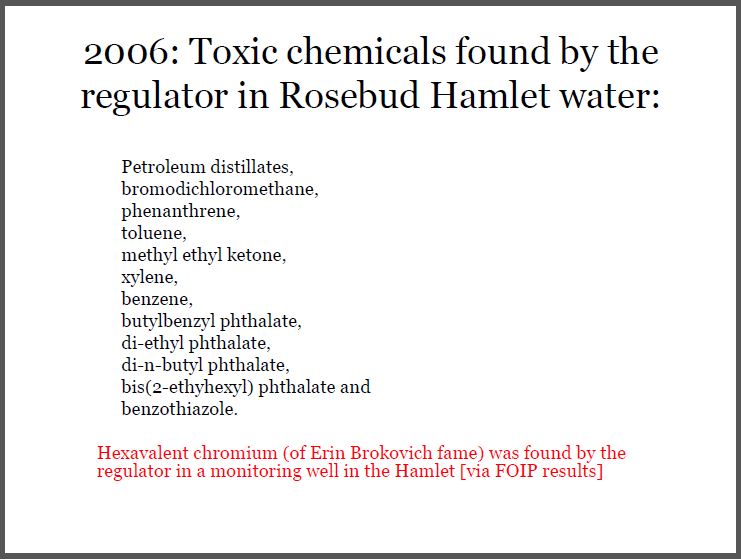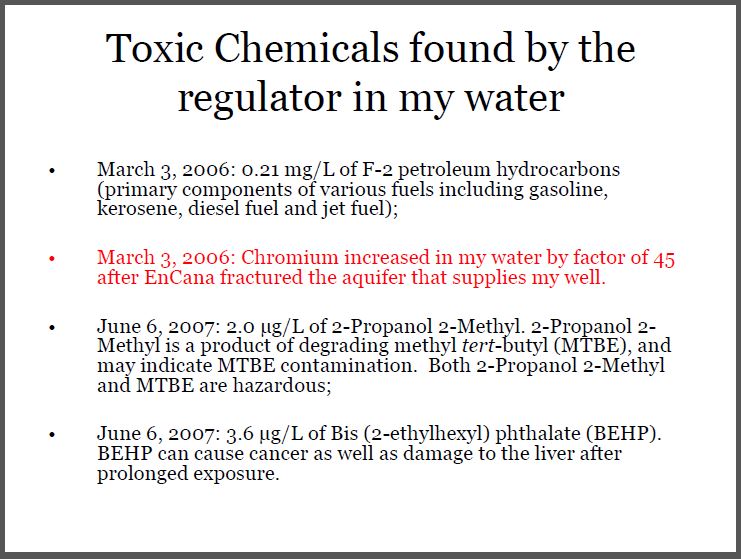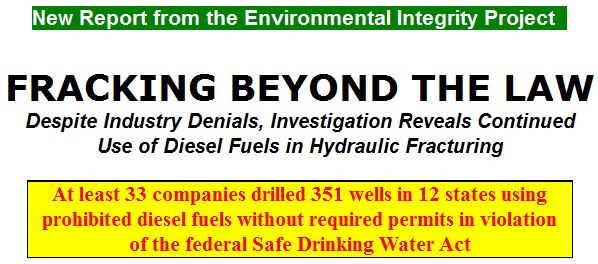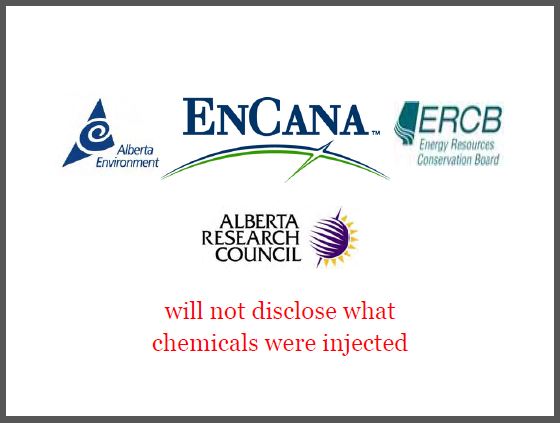Fracking probe finds oil and gas companies illegally injected diesel by Bruce Finley, August 14, 2014, The Denver Post
Fracking Beyond the Law: Despite Industry Denials, Investigation Reveals Continued Use of Diesel in Hydraulic Fracturing by Environmental Integrity Project, August 13, 2014
At least 33 companies drilled 351 wells in 12 states using prohibited diesel fuels without required permits in violation of the federal Safe Drinking Water Act.
WASHINGTON, D.C. — The illegal injection of diesel fuel during hydraulic fracturing has continued over the last four years, despite repeated denials by the drilling industry, according to a report by the Environmental Integrity Project (EIP). In its investigation, EIP also found troubling evidence that drilling companies have been changing and eliminating their disclosures of past diesel use from the industry self-disclosure database of chemicals used in hydraulic fracturing, called FracFocus.
Injecting diesel fuel into the ground to fracture shale and extract gas or oil is a potential threat to drinking water supplies and public health because diesel contains toxic chemicals, such as benzene, that cause cancer or other serious health problems, even at low doses.
EIP’s report, “Fracking Beyond the Law,” uses self-reported data from drilling companies and federal records to document at least 33 companies fracking at least 351 wells across 12 states with fluids containing diesel from 2010 through early August 2014. Diesel fuels were used to frack wells in Texas, Colorado, North Dakota, Arkansas, Oklahoma, Wyoming, New Mexico, Utah, Kansas, Pennsylvania, West Virginia, and Montana without required Safe Drinking Water Act permits.
“EPA and the states have an obligation to protect the public from the potential health hazards of fracking by enforcing the Safe Drinking Water Act,” said report author Mary Greene, Managing Attorney for EIP and a former EPA enforcement attorney. “We urge EPA and the states to exercise their legal authority by immediately investigating the compliance status of these 351 wells and taking all necessary steps to make sure they are properly permitted. Companies that inject diesel without permits should be fined for ignoring the law.”
EIP’s investigation also revealed that some oil and gas companies have been changing their disclosures submitted to FracFocus, the privately-run fracking chemical disclosure registry, in a manner that removes any and all indication of past injection of diesel. FracFocus, which was created by industry as an alternative to mandatory disclosure to federal or state governments, allows operators to change or replace previous disclosures, at any time, without leaving any record of or justification for the change.
The fact that drilling companies have free reign to remove from FracFocus past disclosures of their own diesel use points to the need for a more transparent and reliable national system for the reporting of toxic chemicals used in hydraulic fracturing, EIP’s report concludes. Claims of trade secrets are also a barrier to an accurate accounting of what chemicals are being used. Because of the flawed reporting system, the 351 wells identified in the EIP report are likely a low estimate. “The public deserves more disclosure and transparency about the toxic chemicals used in hydraulic fracturing,” Greene said. “The current reporting system must be improved.”
In 2005, Congress passed the Energy Policy Act, which exempted hydraulic fracturing from key requirements of the Safe Drinking Water Act and federal Clean Water Act. The exemption was nicknamed the “Halliburton Loophole,” after then-Vice President Cheney’s former oil and gas company, which pioneered the controversial extraction method. As part of this loophole, Congress allowed EPA to retain its authority to prohibit the underground injection of diesel fuels unless authorized by a Safe Drinking Water Act permit. The purpose of these permits is to safeguard public health by ensuring that diesel-containing fluids do not escape the well and contaminate underground sources of drinking water.
The potential threat of drilling to drinking water is not an abstract one. A July 22 Pittsburgh Post-Gazette report used Pennsylvania Department of Environment Protection data to document 209 times that fracking has damaged public water supplies since 2007.
Over the last decade, drilling companies have repeatedly claimed they are no longer using diesel fuel in fracking, although a 2011 investigation by U.S. House Democrats concluded otherwise. In February 2014, EPA sought to clarify the law by releasing guidance identifying five commonly used drilling products containing diesel fuels that require a permit prior to well fracturing.
The Environmental Integrity Project examined disclosure data submitted to FracFocus and aggregated by a Houston-based consulting firm called PIVOT Upstream Group. Using these sources and federal records, EIP identified at least 351 wells in 12 states that have been fracked over the last four years with one or more of the five prohibited products identified as diesel in the February EPA guidance. EIP contacted these 12 states and EPA and confirmed that none of these drilling companies applied for — or received – the required permits to frack with diesel.
EIP researchers also discovered numerous fracking fluids with high diesel content for sale online, including over a dozen products sold by Halliburton and advertised as additives, friction reducers, emulsifiers, etc. The fact that these products are offered for sale suggest that drilling companies are buying these products without obtaining the required permits to use them.
The “Fracking Beyond the Law” report concludes that: 1) diesel use in fracking should be eliminated or at least properly permitted; 2) FracFocus needs to be improved to increase transparency and accountability; 3) companies that supply fracking products containing diesel should be required to label their products and notify operators of the need to obtain Safe Drinking Water Act permits; 4) drilling companies should fully disclose the contents of all fracking fluids, including the ingredients in trade secret products and the chemical composition of base fluid; and 5) states should list diesel-based fracking products that require a permit. [Emphasis added]
Listen to audio of EIP’s August 8, 2014, telephone press conference on “Fracking Beyond the Law”
NOTE TO EDITORS: This report was initially scheduled for public release on June 19, 2014, but EIP postponed the release until August 13 and revised the report when the organization learned that drilling companies had been changing their disclosures in the FracFocus database. The updated report addresses the systemic problem raised by the fact that drilling companies have free reign to remove indications of past diesel use without explaining or justifying such changes. [Emphasis added]
Fracking fight flares over diesel use by Erica Martinson, August 13, 2014
The natural gas industry and environmentalists feuded again Wednesday over whether fracking operations still use toxic diesel compounds that could contaminate drinking water.
EPA, for now, is staying out of it.
The industry’s own data show widespread use of diesel fuel as an ingredient in fracking fluids in at least 351 wells in 12 states….
And the group says those numbers may be only the tip of the iceberg, given how difficult it is to analyze the information, and the fact that much of it is kept under wraps as confidential business information. The group also cited numerous instances of companies quietly going into a voluntary database to revoke their admissions of diesel use.
But industry groups are calling foul, saying EIP is misrepresenting the data provided to FracFocus, the industry’s voluntary disclosure database. … Instead of defining “diesel,” the law left that task to EPA, which has been in no rush to require permits for fracking operations. The agency’s definition of “diesel” includes five types of chemically similar fuels, one of which is kerosene.
Industry points out that kerosene was the product used in 286 of the 351 wells that EIP found using diesel, based on information in FracFocus. The data EIP analyzed comes from 2010 to July 2014. …
On the other hand, EPA had included kerosene in its draft guidance in 2012, so oil and gas companies were on notice that the agency might be headed there, and the greens argue that kerosene has always been considered diesel fuel. …
Three years ago, House Democrats charged that companies had injected more than 30 million gallons of diesel fuel or fracking fluids containing diesel from 2005 to 2009, possibly violating the law. But the industry has argued for years that diesel is passé. “Diesel fuel is simply not used in fracking operations,” Energy in Depth said in a 2010 statement. …
EPA appears generally comfortable taking the industry’s word for it.
When the agency was developing its February guidance, it told companies they would need permits if they kept using diesel, EPA spokeswoman Alisha Johnson said Wednesday. “Many of those companies indicated that they planned to discontinue the use of diesel,” she said, adding that the agency believes that many companies have “followed through on those plans.”
EPA is not alone. A June report by the Government Accountability Office said seven of the eight state programs it reviewed thought diesel wasn’t being used anymore. But that’s not what the data said, according to EIP’s digging in the industry-led FracFocus database.
Since EPA released its guidance Feb. 11, four companies have said in their disclosures that they used diesel and kerosene at 20 wells in Texas and Oklahoma, according to EIP’s analysis. But “not a single permit application has been submitted and not a single permit has been issued,” said Mary Green, the author of the report. …
Meanwhile, 80 percent of the fluid injected in the 351 wells EIP cited in its report, by volume, was marked “either as trade secret, confidential business information, proprietary information, or with a non-identifying notation, and was therefore not disclosed or the contents were ambiguously described,” the report said. …
Green argued that at best, FracFocus “is a loose system,” with little oversight and no accountability. Well operators “change their chemical disclosure data at will,” and the program gives them “free rein to remove their disclosures” without any notation or explanation, she said. [Emphasis added]
[Refer also to:
Toxic water, vomiting children living near fracking operation
Bellatrix Exploration Ltd. 70% hydrocarbon carrier fluid frac January 3, 2013 near Diana Daunheimer’s home, from fracfocus.ca (removed from fracfocus on July 4, 2014. After Ms. Daunheimer asked why it was removed – without getting an answer, the record was put back on July 11, 2014, but not searchable under Bellatrix – previously Angle Energy)
Oil companies fracking into drinking water sources, new research shows
 2006: Pallets of petroleum distillates on Encana lease near Rosebud. Indicators of petroleum distillates (man-made, not made by bacteria or nature) were found by the regulator in the Hamlet of Rosebud and Ernst drinking water wells
2006: Pallets of petroleum distillates on Encana lease near Rosebud. Indicators of petroleum distillates (man-made, not made by bacteria or nature) were found by the regulator in the Hamlet of Rosebud and Ernst drinking water wells


Tim and Christine Ruggiero’s pre frac water test showed their water was clean and safe. After frac’ing their water tested with very high levels of MTBE an additive used in diesel fuel. Ruggieros reportedly settled and signed a non disclosure agreement.


